Dating Safety: A Guide for LGBTQ+ Individuals
Dating can be an exhilarating journey filled with the promise of love and companionship, but for LGBTQ+ individuals, it often comes with unique challenges and risks. Navigating the dating world safely is not just about finding the right partner; it's about ensuring that your physical and emotional well-being is protected every step of the way. In a world where online interactions are becoming the norm, understanding how to engage with potential partners while maintaining your safety is crucial. This guide aims to provide essential tips and advice tailored specifically for LGBTQ+ individuals, helping to create a positive and secure dating experience.
Whether you're swiping through dating apps or meeting someone in a social setting, being aware of your surroundings and the people you interact with can make all the difference. It's essential to cultivate a sense of awareness about potential risks—both online and offline. This article will explore various strategies to enhance your dating safety, from choosing the right platforms to establishing personal boundaries and preparing for emergencies. Remember, your safety should always be your top priority, and by following these guidelines, you can enjoy the dating experience with confidence.
Recognizing potential dangers in dating is crucial for LGBTQ+ individuals. The dating landscape can be filled with uncertainties, and being informed about these risks can significantly reduce anxiety. Common risks associated with both online and offline dating include encountering catfishing, harassment, and even physical danger. For instance, when engaging with someone online, it's essential to be cautious about sharing personal information too soon. Many people create fake profiles to mislead others, which can lead to emotional distress or worse.
Moreover, offline dating comes with its own set of challenges. Meeting someone for the first time can be thrilling, yet it can also expose you to unforeseen risks. It's important to trust your instincts and recognize when a situation feels uncomfortable. By being aware of these potential dangers, you can take proactive measures to protect yourself. Always remember: if something feels off, it probably is.
Selecting the right dating platform can significantly enhance your safety. Not all dating apps and websites are created equal, and it's vital to choose those that prioritize user safety and inclusivity. Some platforms are specifically designed for LGBTQ+ individuals, offering a more supportive environment. When considering which app or site to use, look for features that promote safety, such as verification processes, user reviews, and community guidelines that discourage harassment.
Before joining a dating app, it's essential to research its reputation and user reviews. Look for platforms that have a strong track record of safety and inclusivity. Check out forums or social media groups where users share their experiences. Key factors to consider when evaluating dating platforms include:
- User verification processes
- Reporting features for inappropriate behavior
- Community guidelines and support resources
- Inclusivity of different sexual orientations and identities
Understanding and utilizing privacy settings on dating apps can protect your personal information. Most platforms offer various privacy options that allow you to control who can see your profile and personal details. Take the time to adjust these settings for optimal security. For example, consider limiting your profile visibility to only those who match with you or using features that allow you to hide certain personal information until you feel comfortable sharing it.
Utilizing reporting features can help maintain a safe community. If you encounter inappropriate behavior or profiles, it's crucial to report them immediately. Most dating platforms have a straightforward process for reporting users who violate community guidelines. By doing so, you're not only protecting yourself but also helping to create a safer environment for others.
When transitioning from online interactions to in-person meetings, safety measures are vital. Always choose a public place for your first date, such as a café or a park, where there are plenty of people around. Inform a friend or family member about your plans, including who you're meeting and where you'll be. This simple step can provide an added layer of security. Additionally, consider setting up a check-in system with a friend to ensure that you feel comfortable throughout the date.
Setting clear boundaries is essential for healthy dating. It's important to communicate your personal limits and respect those of your potential partners. Establishing boundaries can help prevent misunderstandings and foster trust between you and your date. Remember, it's okay to say no to things that make you uncomfortable, and a respectful partner will appreciate your honesty.
Open communication about comfort levels fosters trust. Discussing what you are and aren't comfortable with can help both you and your partner navigate the dating landscape more effectively. Consider having a conversation about topics like physical affection, emotional intimacy, and personal space before engaging in deeper interactions.
Identifying red flags early can prevent harmful situations. Be vigilant for warning signs such as:
- Excessive jealousy or possessiveness
- Disrespectful language or behavior
- Inconsistent stories or evasiveness about personal details
If you notice these signs, trust your instincts and reconsider the relationship. It's always better to be cautious than to ignore your gut feelings.
Being prepared for emergencies is crucial when dating. Having a plan in place can make a significant difference in how you handle unexpected situations. Consider creating a safety plan that includes details such as who to contact in case of an emergency, where to go if you feel unsafe, and how to discreetly signal for help if needed.
Sharing your location with a trusted friend during dates can enhance safety. Many smartphones have features that allow you to share your real-time location with selected contacts. This simple step can provide peace of mind for both you and your loved ones.
Having a safety plan in place ensures readiness for unexpected situations. Outline steps to create an effective safety strategy for dates, including:
- Identifying safe places to meet
- Deciding on a code word with a friend for emergencies
- Planning how to leave a date if you feel uncomfortable
Q: How can I ensure my safety while using dating apps?
A: Always research the app's safety features, adjust your privacy settings, and trust your instincts. If something feels off, don't hesitate to end the conversation or block the user.
Q: What should I do if I encounter harassment on a dating platform?
A: Use the reporting features available on the app to report the behavior. It's important to protect yourself and others by notifying the platform of any inappropriate conduct.
Q: How can I communicate my boundaries effectively?
A: Be straightforward and honest about your comfort levels. Use "I" statements to express your feelings and ensure that the conversation is respectful and open.
Q: What should I do if I feel unsafe on a date?
A: Trust your instincts and prioritize your safety. Have a plan in place for leaving the situation, and don't hesitate to contact a friend or authority if necessary.

Understanding the Risks
When it comes to dating, especially for LGBTQ+ individuals, understanding the risks involved is paramount. The dating landscape can be as thrilling as it is daunting, filled with potential connections but also lurking dangers. Whether you’re swiping through dating apps or meeting someone at a local café, being aware of the risks can significantly enhance your safety and overall experience.
One of the most pressing concerns in the dating world is the potential for catfishing. This is where someone creates a fake identity online to deceive others. Imagine investing time and emotions into someone only to find out they are not who they claimed to be. This can lead to feelings of betrayal and vulnerability. Additionally, there’s the risk of encountering individuals who may harbor malicious intentions. It’s essential to be cautious and recognize that not everyone you meet online has good intentions.
Another risk that LGBTQ+ individuals might face is discrimination or harassment. Unfortunately, not everyone is accepting, and some may react negatively to your identity or orientation. This can manifest in various ways, from subtle comments that make you uncomfortable to outright hostility. Being prepared for these situations and knowing how to respond can help you navigate the dating scene more safely.
Furthermore, when meeting someone for the first time, especially from an online platform, the risk of physical danger cannot be overlooked. It’s crucial to be aware of your surroundings and to trust your instincts. If something feels off, it's okay to back out of a situation. Always remember that your safety should be your top priority.
To summarize, here are some common risks that LGBTQ+ individuals might encounter while dating:
- Catfishing: Encountering individuals who misrepresent themselves online.
- Discrimination: Facing negative reactions based on your identity or orientation.
- Physical safety: The potential for dangerous situations during in-person meetings.
By understanding these risks, you can take proactive steps to protect yourself while still enjoying the exciting journey of dating. Always stay vigilant, trust your gut feelings, and prioritize your safety above all else.
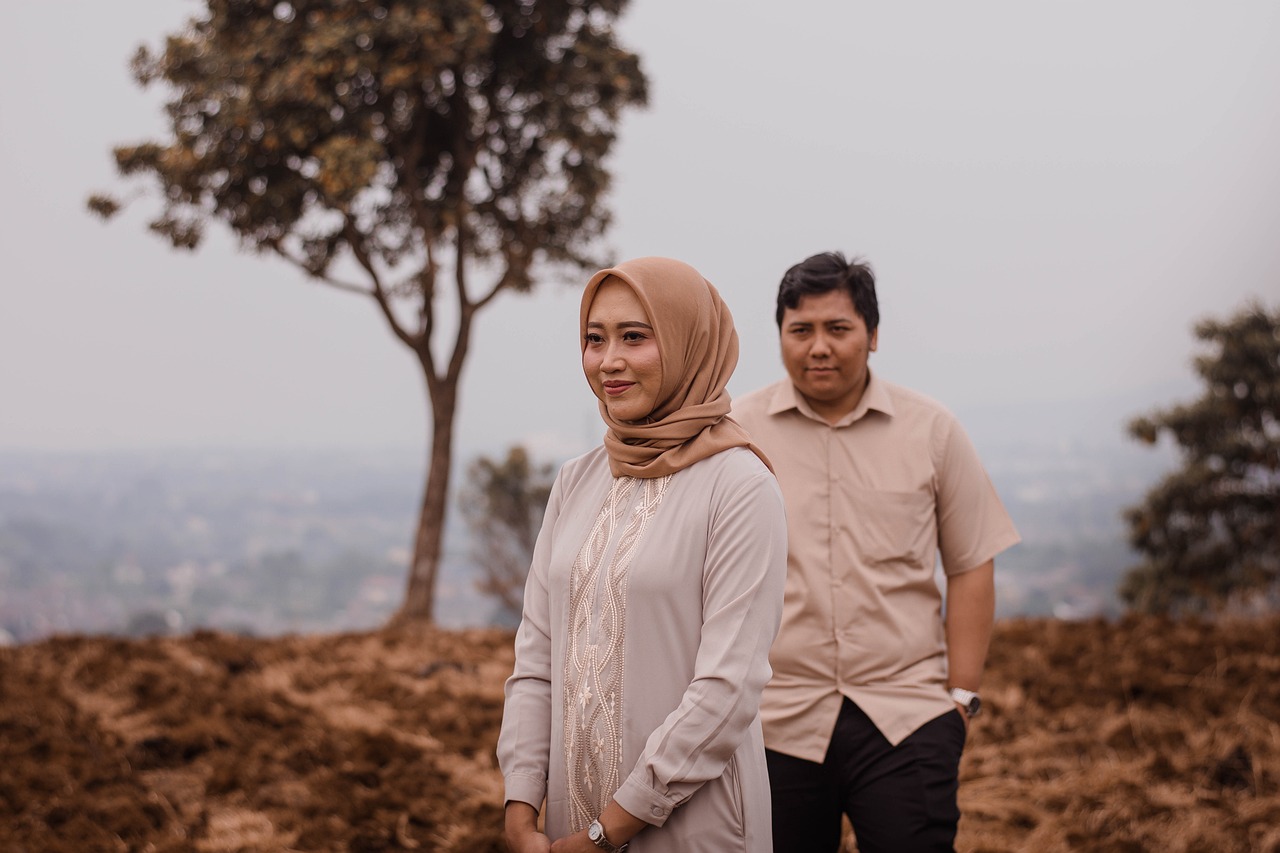
Choosing Safe Platforms
When it comes to dating, the platform you choose can make all the difference in ensuring a safe and enjoyable experience. With so many options available, it's essential to select a platform that not only aligns with your dating goals but also prioritizes user safety and inclusivity. Think of it like choosing a venue for a party; you wouldn’t want to host it in a place that feels unsafe or unwelcoming, right? The same principle applies to online dating.
First and foremost, consider the reputation of the dating app or website. Look for platforms that have a strong track record of protecting their users. This can often be determined by checking reviews and testimonials from other users. A reliable dating platform will have a community that feels safe and supported, which is crucial for LGBTQ+ individuals navigating the dating scene. You can also check for any news articles or reports that discuss the platform's safety measures and user experiences.
Another critical factor to consider is the app's privacy settings. A good dating platform will offer robust privacy features that allow you to control who sees your profile and personal information. For example, can you hide your profile from certain users? Are there options to block or report suspicious accounts easily? Understanding these settings is vital to protecting your personal information and ensuring that you feel comfortable while using the app.
Additionally, many dating platforms have built-in reporting features that allow users to flag inappropriate behavior or profiles. This is an essential tool for maintaining a safe community. When you encounter someone who makes you uncomfortable, being able to report them quickly can help protect not only yourself but also other users. Make sure to familiarize yourself with how to use these features effectively, as they are your first line of defense against unwanted interactions.
It's also worth noting that some platforms offer features like video calls and voice messages before meeting in person. These tools can help you gauge compatibility and comfort levels without the pressure of an immediate face-to-face meeting. It’s like having a trial run before the big date, giving you a chance to get to know someone better in a safer environment.
In summary, when choosing a dating platform, prioritize safety by researching its reputation, understanding privacy settings, and utilizing reporting features. By doing so, you’ll create a more secure dating experience that allows you to focus on finding meaningful connections. Remember, the right platform can be the difference between a positive dating journey and a stressful one, so choose wisely!

Researching Dating Apps
In today's digital age, the quest for love and companionship often begins with a simple swipe on a dating app. However, not all dating platforms are created equal, and taking the time to research before diving in can save you from potential pitfalls. When considering which app to use, it's essential to look beyond just flashy advertisements and consider the app's reputation and user experience. Start by reading user reviews and testimonials; these can provide invaluable insights into the app's effectiveness and safety features. Remember, a platform that is popular may not necessarily be the best fit for you.
Another critical aspect to investigate is the app's target audience. Some apps cater specifically to LGBTQ+ individuals, while others may have a more general user base. If you're looking for a community that understands your experiences, choosing an inclusive platform can make all the difference. A few well-regarded dating apps for LGBTQ+ individuals include:
- Grindr: A popular app for gay, bi, trans, and queer people, known for its geolocation features.
- Tinder: While not exclusively for LGBTQ+ users, it offers a diverse user base and inclusive options.
- HER: A dating app designed specifically for LGBTQ+ women and non-binary individuals.
- OkCupid: Known for its extensive questionnaire that helps match users based on compatibility, it supports various gender identities and sexual orientations.
Furthermore, it's crucial to check the app's privacy policies. Understanding how your data will be used and protected can help you make an informed decision. Look for features that allow you to control who sees your profile and what information is visible to others. This is especially important in the LGBTQ+ community, where privacy can be a significant concern.
Lastly, don't underestimate the importance of trying out the app yourself. Many platforms offer free trials or basic memberships that allow you to get a feel for the interface and community before fully committing. Pay attention to how actively users engage with one another and whether the app feels welcoming and respectful. By doing your homework and being thorough in your research, you can find a dating app that not only meets your needs but also prioritizes your safety and comfort.

Privacy Settings
When it comes to online dating, particularly for LGBTQ+ individuals, are your first line of defense. Think of these settings as a protective shield, ensuring that your personal information remains just that—personal. Before diving headfirst into the dating pool, take a moment to familiarize yourself with the privacy features available on your chosen dating app or website. Many platforms offer a variety of options designed to enhance your security and control over your information.
For instance, you might want to consider the following privacy settings:
- Profile Visibility: Check if you can set your profile to be visible only to users you match with or those you specifically approve.
- Location Settings: Some apps allow you to hide your exact location. Instead of sharing your precise address, you can opt to share a general area, which adds an extra layer of safety.
- Blocking Users: Familiarize yourself with how to block or report users who make you uncomfortable. This is crucial for maintaining a safe space.
Adjusting these settings not only protects your identity but also empowers you to control who sees your information. Remember, it’s not just about what you share but also about who can see it. Regularly reviewing and updating your privacy settings is essential, especially if the app introduces new features or changes its policies.
Moreover, be cautious about sharing personal details, such as your full name, workplace, or any other identifying information, until you feel completely comfortable with someone. It’s all about taking control of your dating experience. If you ever feel pressured to share more than you’re comfortable with, it’s perfectly okay to stand your ground. Your safety and comfort should always come first.
In summary, understanding and utilizing privacy settings on dating platforms is vital for protecting your personal information. By being proactive and informed, you can navigate the dating world with greater confidence and security.

Reporting Features
In today's digital age, online dating has become a popular avenue for LGBTQ+ individuals seeking companionship. However, with this convenience comes the responsibility of ensuring a safe environment. One of the most vital tools at your disposal is the reporting feature found on most dating platforms. These features are designed to help users maintain a secure and respectful community by allowing them to report inappropriate behavior or profiles.
When you encounter someone who makes you feel uncomfortable or violates the platform's guidelines, it’s crucial to take action. Reporting not only protects you but also helps safeguard others from potential harm. Most dating apps have a straightforward reporting process, typically accessible through the profile or message options. You can usually find a button or link labeled “Report” or “Flag.”
Here’s a quick overview of what to look for when using reporting features:
- Clarity: The reporting process should be clear and easy to navigate. If you can’t find the option, it may be a red flag about the platform’s commitment to user safety.
- Response Time: After reporting, observe how quickly the platform responds. A prompt response indicates that they take user safety seriously.
- Feedback: Some apps provide feedback on the outcome of your report. This transparency is essential for building trust within the community.
It's also essential to document any interactions that lead you to report someone. Take screenshots of messages or profiles, as this information can be helpful for the platform's moderation team. Remember, reporting isn’t just about removing a problematic user; it’s about fostering a safer environment for everyone.
Many platforms also encourage users to block individuals after reporting them. Blocking prevents further communication and can give you peace of mind while using the app. If you feel threatened or harassed, don’t hesitate to use these features. Your safety is paramount, and taking proactive steps can help create a more enjoyable dating experience.
In conclusion, while dating can be an exciting journey, it's essential to remain vigilant and utilize the reporting features available to you. By doing so, you contribute to a safer online dating community for yourself and others. Always remember, your comfort and safety should never be compromised, and utilizing these tools empowers you to take control of your dating experience.
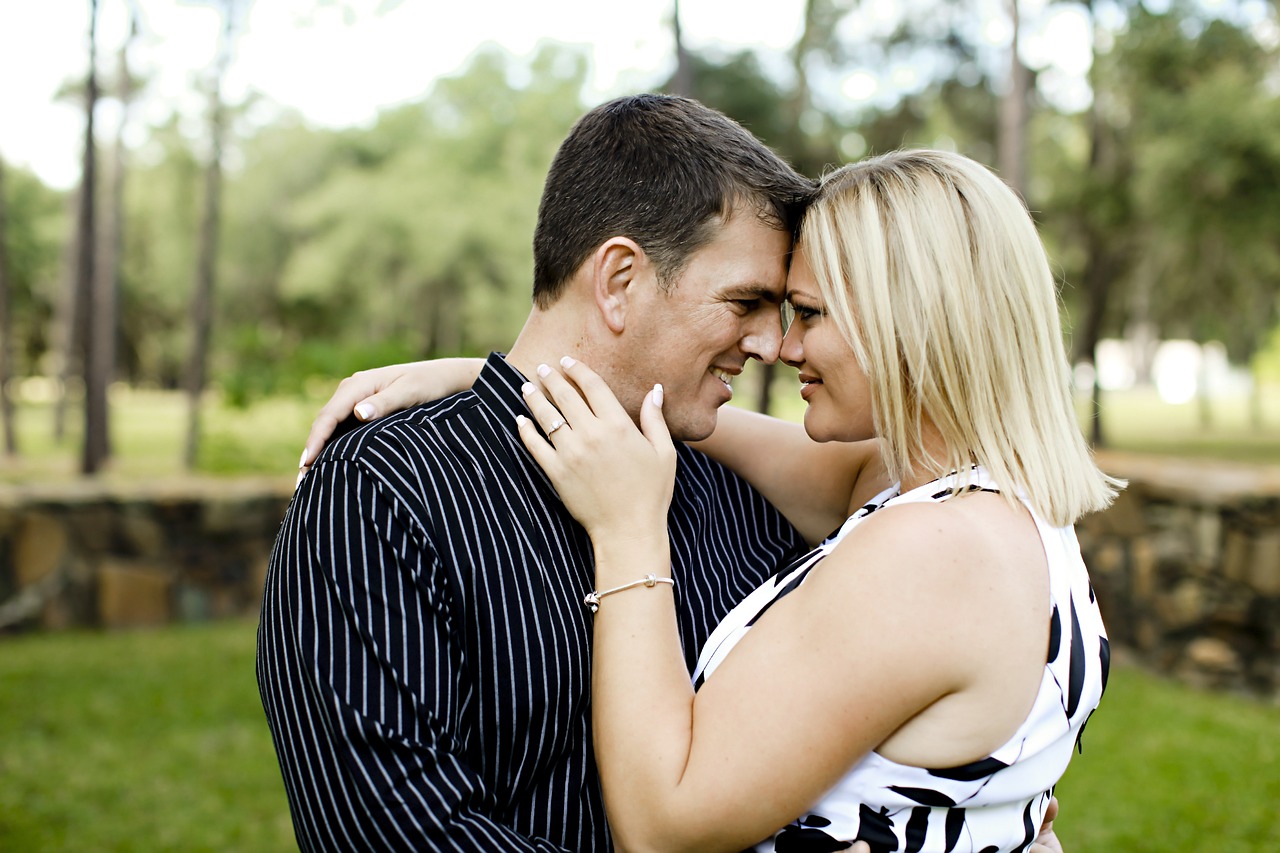
Offline Dating Safety
When you finally decide to take the plunge and meet someone in person after chatting online, it's essential to prioritize your safety. Offline dating can be thrilling, but it also presents unique challenges and risks that you need to navigate carefully. The excitement of meeting someone new should never overshadow the importance of being cautious. So, how can you ensure that your offline dating experience is both enjoyable and safe?
First and foremost, choose a public place for your first meeting. Think about it: a bustling café, a lively park, or a popular restaurant can provide the perfect backdrop for your date while also ensuring that you're surrounded by other people. This not only helps you feel more secure but also gives you an easy exit if things don't go as planned. Remember, safety in numbers is not just a saying—it's a vital practice!
Next, consider letting a friend know about your plans. Share the details of your date, including where you're going and who you're meeting. You might even want to set up a check-in system where you send them a quick text at a certain time. This simple act can provide an extra layer of security, giving you peace of mind while you focus on getting to know your date.
It's also wise to keep your personal information private during your initial meetings. While it might be tempting to share everything about yourself, especially if you feel a connection, remember that you don't know this person yet. Avoid divulging sensitive information like your home address, workplace, or financial details. Think of it as building a wall of trust—it's perfectly okay to take your time before letting someone peek behind the curtain.
In addition to these precautions, trust your instincts. If something feels off during your date, don’t hesitate to excuse yourself. Your gut feelings are powerful indicators of your safety. If your date is making you uncomfortable or crossing boundaries, it’s absolutely okay to leave. You deserve to feel safe and respected at all times.
Lastly, it's beneficial to have a plan for transportation. Whether you’re driving yourself, using a rideshare service, or relying on public transportation, having a clear idea of how you’ll get to and from your date can alleviate stress. If possible, arrange your own transportation rather than relying on your date to drive you home. This way, you maintain control over your safety and can leave at your discretion.
In conclusion, offline dating can be a fantastic way to meet new people and potentially find love. By taking these safety precautions—choosing public places, keeping friends informed, protecting your personal information, trusting your instincts, and planning your transportation—you can create a more secure dating experience. Remember, the goal is to enjoy the journey of finding companionship while ensuring your well-being is always a priority.
- What should I do if I feel uncomfortable during a date?
If you feel uncomfortable, trust your instincts. Politely excuse yourself and leave the situation. Your safety is the most important thing. - Is it safe to meet someone from a dating app in person?
Yes, but make sure to follow safety guidelines, such as meeting in a public place and letting a friend know your plans. - How can I protect my personal information when dating?
Avoid sharing sensitive information like your home address or financial details until you know the person better. - What if my date is not who they said they were?
If you notice discrepancies between what they told you and who they are in person, it’s okay to leave. Always prioritize your safety.

Establishing Boundaries
When it comes to dating, especially in the LGBTQ+ community, establishing boundaries is not just a good idea—it's essential. Think of boundaries as the invisible lines that help define what you are comfortable with and what you are not. Just like a fence around your garden keeps out unwanted visitors, setting boundaries in dating helps protect your emotional and physical space. But how do you go about doing this? It starts with understanding yourself and what you want from a relationship.
First off, it’s important to realize that boundaries can be both emotional and physical. Emotional boundaries might involve how much you share about your past or what topics are off-limits during conversations. Physical boundaries, on the other hand, could relate to personal space or the pace at which you want to progress in a relationship. The key is to be clear about these limits, not just to yourself but also to your partner. This clarity can help foster a trusting environment where both individuals feel safe and respected.
Communicating your boundaries can feel daunting, especially if you're worried about how the other person will react. However, think of it this way: Would you rather lay down the rules upfront or deal with misunderstandings later? It's like setting the stage for a play; if everyone knows their roles and the script, the performance goes much smoother. Here are a few strategies to effectively communicate your comfort levels:
- Be Direct: Use clear and concise language to express your feelings. Instead of saying, "I don't want to rush things," try saying, "I prefer to take things slow." This eliminates ambiguity.
- Use "I" Statements: Frame your boundaries in a way that reflects your feelings. For example, "I feel uncomfortable when..." instead of "You make me uncomfortable when..." This approach minimizes defensiveness.
- Practice Active Listening: Boundaries are a two-way street. Make sure to listen to your partner's boundaries as well. This builds respect and understanding.
Recognizing and respecting each other's boundaries is crucial for a healthy relationship. If your partner reacts negatively to your boundaries, it may be a red flag. Remember, a partner who genuinely cares about you will appreciate your honesty and will want to ensure that both of you feel comfortable. It's not just about you setting the rules; it's about mutual respect and understanding.
In the world of dating, boundaries can also change over time. As you get to know someone better, you might find that you're comfortable with things you weren't before, or vice versa. It's okay to revisit and adjust your boundaries as the relationship evolves. Just like a river that carves its own path, your relationship can flow and change, but the banks (your boundaries) should always be there to guide it.
So, whether you're swiping right on a dating app or meeting someone for coffee, remember that establishing boundaries is a vital part of the dating process. It not only protects you but also sets the tone for a respectful and caring relationship. After all, love should feel safe and empowering, not like a game of emotional roulette.
Q: What if my partner doesn't respect my boundaries?
A: If your partner consistently disregards your boundaries, it may be time to reassess the relationship. Healthy relationships are built on mutual respect.
Q: How can I tell if my boundaries are too strict?
A: Reflect on your feelings. If you find yourself feeling isolated or anxious about sharing, it may be worth discussing with a trusted friend or therapist.
Q: Can boundaries change over time?
A: Absolutely! As you grow and learn more about yourself and your partner, it's natural for your boundaries to evolve. Just ensure you communicate any changes openly.
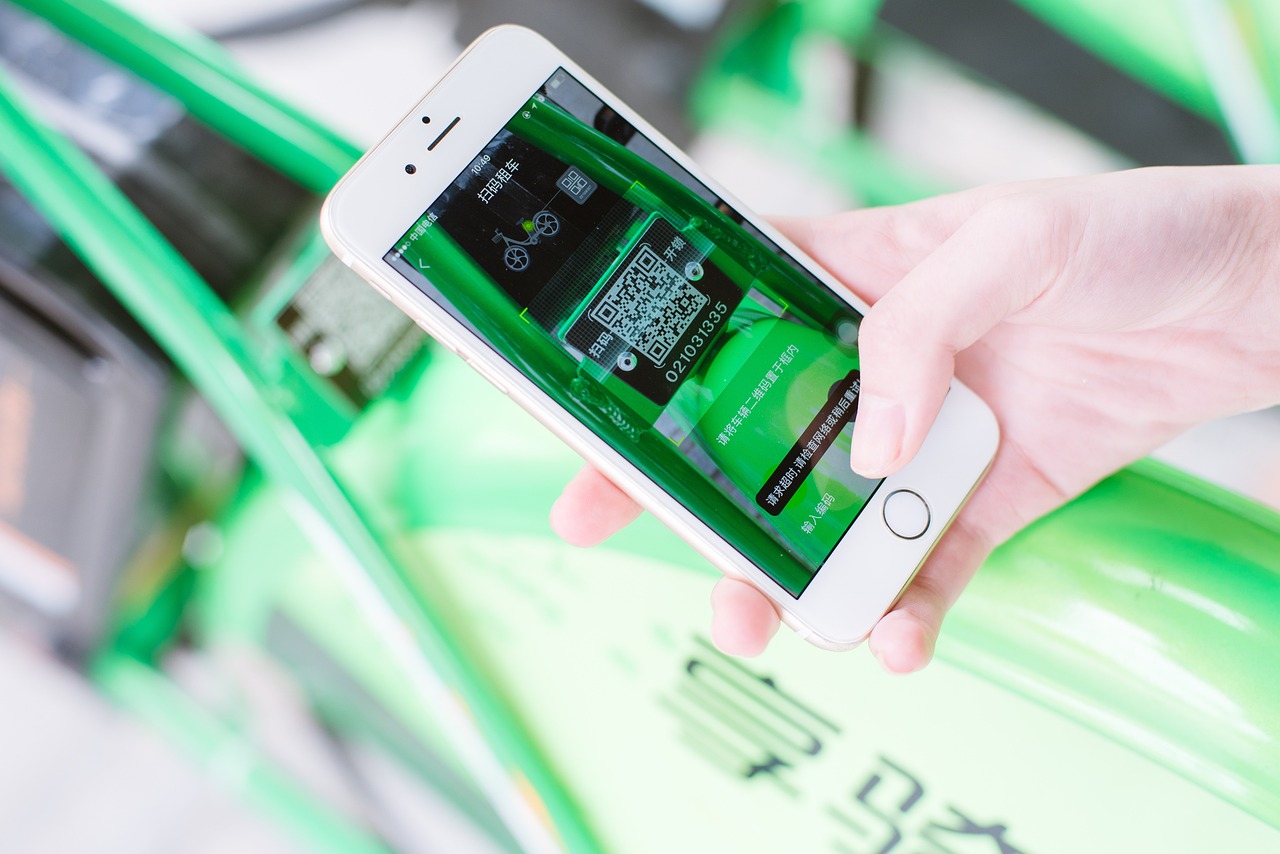
Communicating Comfort Levels
When it comes to dating, especially in the LGBTQ+ community, is paramount. Think of it as setting the stage for a performance; if the actors don’t know their boundaries, the show can quickly turn chaotic. Open dialogue about what makes you feel safe and comfortable can foster a trusting environment, allowing both partners to express their needs and desires without fear of judgment.
So, how do you effectively communicate your comfort levels? First, it’s essential to establish a safe space for conversation. Choose a relaxed setting where both you and your partner feel at ease. This could be during a casual coffee date or a quiet evening walk. Once you’re in a comfortable environment, start the conversation gently. You might say something like, “I really enjoy spending time with you, and I think it’s important for us to talk about what we’re both comfortable with.” This approach not only opens the floor for discussion but also shows that you value their feelings.
It’s also important to be specific about your boundaries. For instance, you might want to discuss physical boundaries, emotional comfort, or even topics that are off-limits. Here are some examples of areas you might want to cover:
- Physical Boundaries: What types of physical affection are acceptable? Are you comfortable holding hands, hugging, or kissing?
- Emotional Boundaries: How much personal information are you willing to share? Are there topics that are sensitive for you?
- Time Boundaries: How often do you want to meet? Are you looking for something casual, or are you interested in a serious relationship?
Remember, communication is a two-way street. Encourage your partner to share their own comfort levels as well. Ask open-ended questions like, “What are some things that make you feel uncomfortable?” This not only shows that you care about their feelings but also builds a stronger connection between the two of you.
Another vital aspect is to check-in regularly. Comfort levels can change over time, and what felt okay at the beginning of a relationship might evolve as you get to know each other better. Make it a habit to ask, “How are you feeling about our relationship?” or “Is there anything we should talk about?” This ongoing dialogue can help prevent misunderstandings and ensure that both partners feel safe and respected.
In conclusion, communicating comfort levels is not just about setting boundaries; it’s about creating a nurturing environment where both partners can thrive. By fostering open communication, you’re not only enhancing your dating experience but also paving the way for a healthier relationship. Remember, it’s perfectly okay to express your needs, and doing so can lead to a more fulfilling connection.
Q: How can I start a conversation about comfort levels without making it awkward?
A: You can frame it positively by expressing your enjoyment of the relationship and your desire to ensure both of you feel comfortable. Use open-ended questions to encourage dialogue.
Q: What if my partner doesn't want to discuss comfort levels?
A: It's important to respect their feelings. You can suggest that it's a good topic for future conversations and emphasize that you're open to discussing it whenever they're ready.
Q: How often should I check in about comfort levels?
A: Regular check-ins are beneficial, especially after significant changes in the relationship. Consider doing it every few weeks or after major milestones.

Recognizing Red Flags
When diving into the dating pool, especially for LGBTQ+ individuals, it's vital to keep your eyes peeled for red flags. These warning signs can indicate that someone may not have your best interests at heart, and recognizing them early can save you from potential heartache or worse. Think of red flags as warning lights on your dashboard; if you ignore them, you might end up stranded on the side of the road. So, what should you be looking for?
One of the most concerning red flags is excessive jealousy. If your date seems overly possessive or frequently questions your whereabouts, it could indicate deeper issues related to trust. Jealousy can quickly spiral into controlling behavior, which is not something anyone should have to endure in a relationship. Another warning sign is if they frequently badmouth their exes. While we all have our stories, if someone can't seem to take any responsibility for past relationships, it may suggest that they haven't learned from their mistakes.
Additionally, listen closely to how they speak about their friends and family. If they show a pattern of disrespect or disdain towards others, this behavior might eventually be directed at you. It's also essential to observe how they treat service staff during your dates. Kindness and respect are fundamental in any relationship, and if they can't show that to others, it’s a significant red flag.
Moreover, pay attention to how they handle disagreements. If they resort to name-calling or insults instead of discussing issues calmly, it could indicate a lack of emotional maturity. Healthy relationships thrive on open communication and respect, so if your date is unable to engage in constructive dialogue, it might be time to reconsider your connection.
Another red flag to watch out for is the need for constant validation. If your date seems to rely heavily on compliments and reassurance, it could point to underlying insecurities. While everyone appreciates a good compliment, an excessive need for validation can indicate deeper emotional issues that may complicate a relationship. Trust your instincts; if something feels off, it probably is.
In summary, recognizing red flags is not just about spotting negative behaviors; it's about protecting your emotional well-being. By being aware of these warning signs, you can navigate the dating landscape more safely and confidently. Remember, a healthy relationship should uplift you, not drain you. Always prioritize your safety and happiness above all else.
Q: What should I do if I notice a red flag during a date?
A: Trust your instincts. If something feels off, it's okay to end the date early. Prioritize your safety and well-being above all else.
Q: Are all red flags deal-breakers?
A: Not necessarily. Some behaviors can be addressed through open communication, but if they persist or escalate, it may be time to reconsider the relationship.
Q: How can I communicate my concerns about red flags to my partner?
A: Approach the conversation with honesty and respect. Use "I" statements to express your feelings and concerns without sounding accusatory.
Q: Can red flags be a sign of past trauma?
A: Yes, sometimes red flags can stem from past experiences. However, it's essential for individuals to work through their issues and communicate openly in a relationship.

Emergency Preparedness
When it comes to dating, especially in the LGBTQ+ community, being prepared for emergencies is not just a smart move—it's essential. Imagine you're on a date, and something feels off. You might feel a rush of anxiety or uncertainty, but what if you had a plan in place? That’s where steps in. It’s all about having a strategy that allows you to navigate uncomfortable situations with confidence and safety.
First things first, let’s talk about the importance of a safety plan. This isn’t just about having a backup escape route; it’s about creating a comprehensive strategy that addresses various scenarios. For instance, you might want to establish a code word with a trusted friend that signals you need help. This could be something as simple as “pineapple” or “emergency.” The beauty of this approach is that it doesn’t raise alarms during your date, yet it communicates your need for assistance.
Another crucial aspect of emergency preparedness is sharing your location with someone you trust. This can be done easily using smartphones. Most devices have built-in features that allow you to share your location in real time. Imagine this: you're out at a café, and everything seems fine, but your gut tells you otherwise. By sharing your location with a friend, you ensure that someone knows where you are, providing an extra layer of security. You can use apps like Google Maps or Find My Friends to keep your loved ones in the loop.
Now, let’s delve into creating that all-important safety plan. Here’s a simple outline to get you started:
| Step | Description |
|---|---|
| 1. Identify Trusted Contacts | Choose a few friends or family members who you can rely on in case of an emergency. |
| 2. Establish Communication | Set up a group chat or messaging thread to keep everyone informed of your whereabouts. |
| 3. Set Up a Code Word | Decide on a discreet code word to signal for help without alarming anyone. |
| 4. Plan Your Escape | Know the layout of your date location and identify exits beforehand. |
| 5. Trust Your Instincts | If something feels wrong, don’t hesitate to leave the situation. |
Remember, having a safety plan is like having an insurance policy for your dating life. It’s not about being paranoid; it’s about being prepared. You wouldn’t drive a car without knowing how to change a tire, right? Similarly, you shouldn’t go on a date without a plan for unexpected situations. This proactive approach not only enhances your safety but also allows you to enjoy your dating experience with greater peace of mind.
In conclusion, emergency preparedness is a vital part of dating for LGBTQ+ individuals. From sharing your location to having a solid safety plan, these steps can help you feel more secure and confident as you explore the dating world. So, take a moment to think about your own strategies. Are you ready to face whatever comes your way? With a little preparation, you can ensure that your dating adventures are not only enjoyable but also safe.
- What should I do if I feel unsafe on a date? Trust your instincts. If something feels off, excuse yourself and leave the situation. Always prioritize your safety.
- How can I discreetly ask for help during a date? Use a pre-established code word with a friend. This way, they’ll know you need assistance without raising suspicion.
- Is it safe to share my location with friends? Yes, sharing your location can enhance your safety. Just ensure that you trust the individuals you are sharing it with.
- What are some red flags I should watch for on a date? Look out for controlling behavior, excessive questioning about your personal life, or any signs of disrespect. If you notice these, it may be best to reconsider the situation.
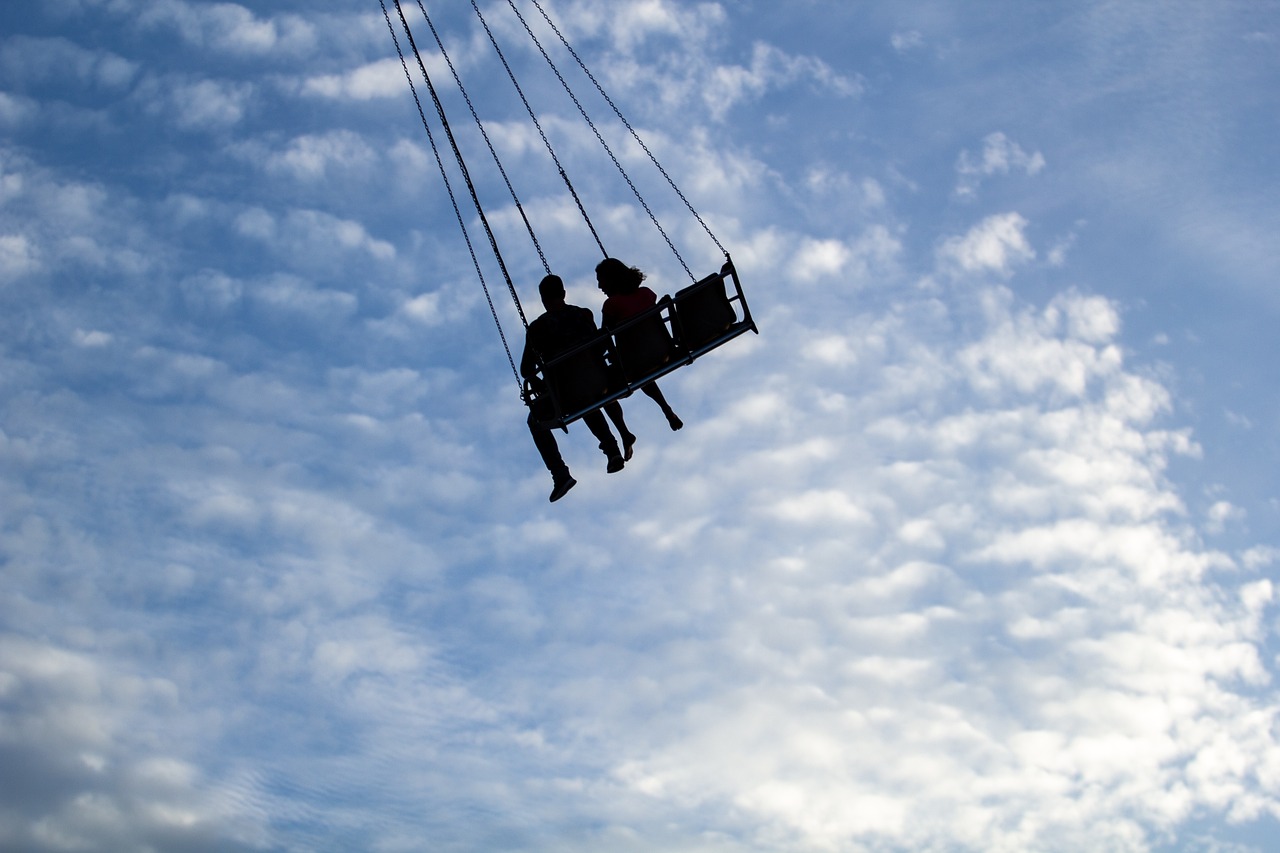
Sharing Your Location
In the realm of dating, especially for LGBTQ+ individuals, with a trusted friend can be a game-changer for your safety. Imagine this: you're about to meet someone new, and while the excitement is palpable, so is the underlying concern for your well-being. By sharing your location, you’re not just taking a precaution; you’re actively engaging in a safety strategy that empowers you. It’s like having a safety net beneath you as you walk the tightrope of dating.
There are several ways to share your location effectively. Most smartphones come with built-in features that allow you to share your real-time location with friends or family. For instance, apps like Google Maps and Apple’s Find My can be incredibly useful. When you share your location with a close friend, they can keep track of where you are during your date. This is particularly important if you’re meeting someone for the first time or if you’re venturing into unfamiliar territory.
However, it’s essential to choose someone you trust to share this information with. Think of it as a buddy system; you wouldn’t want just anyone to know your whereabouts. Ideally, this should be a friend who understands the importance of discretion and safety. You can set a timer for how long you want to share your location, which adds an extra layer of security. For example, if your date is supposed to last two hours, you can share your location for that duration and then stop sharing automatically.
Moreover, technology has made it easier to keep your friends in the loop. Consider using apps that allow for location sharing with a specific group of friends. This way, if something feels off during your date, you can quickly send a message or let them know you need assistance. The key is to ensure that you feel comfortable and secure, allowing you to focus on getting to know your date without constantly worrying about your safety.
Ultimately, sharing your location is about being proactive. It’s your way of ensuring that someone knows where you are, which can be a huge relief. Remember, safety doesn’t have to be a buzzkill; it can actually enhance your dating experience by allowing you to be more present and engaged. Just like you wouldn’t jump into a pool without checking for depth first, don’t dive into dating without a safety strategy in place.
- Is it safe to share my location with friends? Yes, sharing your location with trusted friends can enhance your safety while dating. Just ensure that you choose someone reliable.
- What if I don’t want to share my location? If you’re uncomfortable sharing your location, consider other safety measures, such as checking in with a friend before and after your date.
- How can I share my location discreetly? Use apps that allow you to share your location temporarily or set a timer for location sharing, so it stops automatically after your date.
- What should I do if I feel unsafe during a date? Trust your instincts. If you feel uncomfortable, don’t hesitate to leave the situation. You can also call a friend for support or assistance.
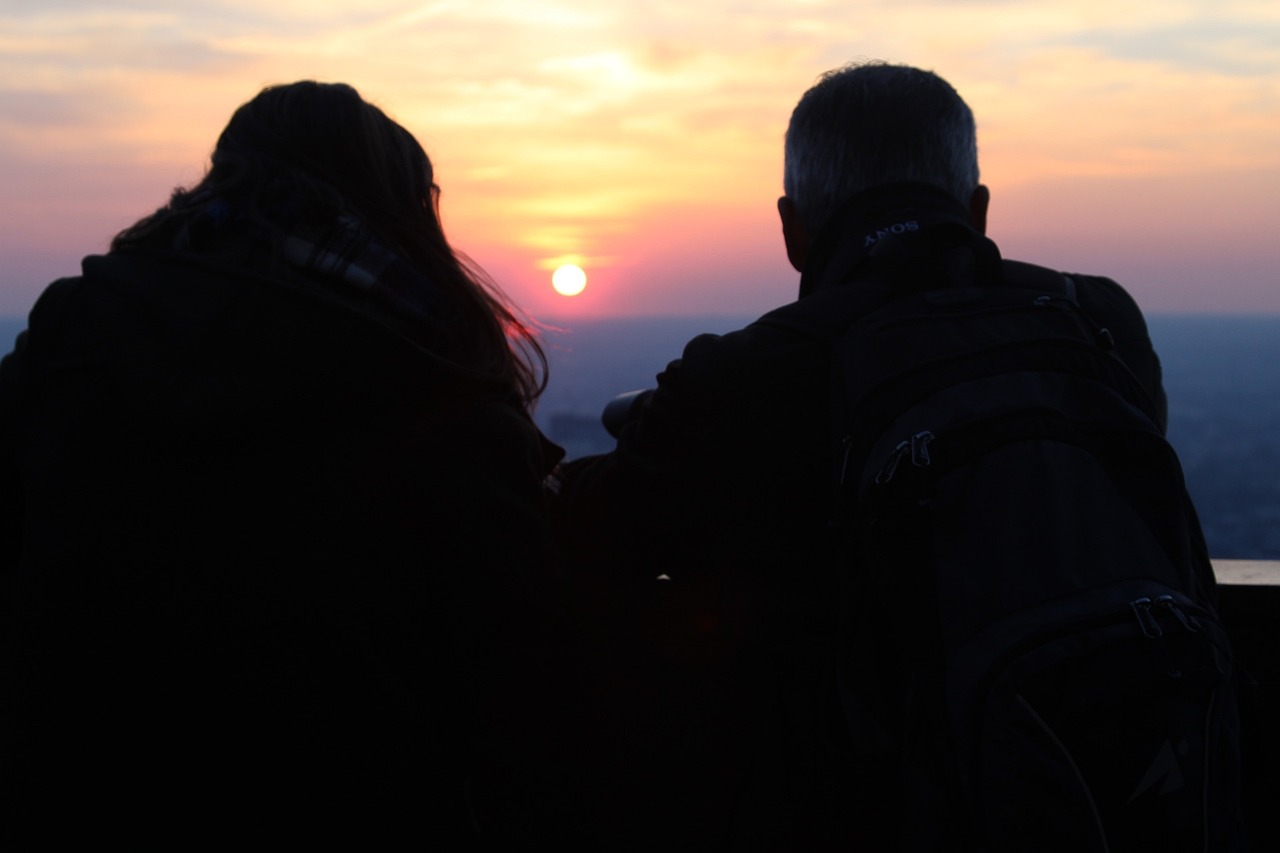
Creating a Safety Plan
Creating a safety plan is an essential step for anyone venturing into the dating world, especially for LGBTQ+ individuals who may face unique challenges. Think of your safety plan as a personal roadmap, guiding you through the sometimes unpredictable terrain of dating. It’s not just about being cautious; it’s about empowering yourself to enjoy the experience while minimizing risks. So, what should your safety plan include? Let’s break it down!
First and foremost, establish a clear communication strategy with a trusted friend or family member. Before you head out on a date, let someone know the details. Share the location, time, and even the name of the person you’re meeting. This simple act of communication can make a world of difference. You might say, “Hey, I’m going on a date with Alex at the Cozy Café at 7 PM. I’ll text you when I get there!” This way, someone knows where you are, and if anything feels off, they can check in on you.
Next, consider the location of your date. Choose a public place that you’re familiar with and that has a good amount of foot traffic. Think about it: would you feel more comfortable at a quiet bar in a secluded area, or at a bustling coffee shop with lots of people around? The latter not only offers a more relaxed atmosphere but also provides a sense of security. You can even scout the location beforehand, so you know what to expect.
Another critical element of your safety plan is to set up a check-in system. This could be as simple as sending a text to your friend at certain intervals during the date. For instance, let them know you’ll check in after 30 minutes, and if you don’t, they should reach out to you. This not only keeps you accountable but also ensures that someone is aware of your situation. If things take a turn, your friend will know to step in.
In addition, it’s wise to have an exit strategy. This means planning how you will leave the date if you start to feel uncomfortable. Whether it’s having your own transportation or knowing the local public transport options, being prepared to leave at a moment's notice can greatly reduce anxiety. You might even want to have a code word with your friend that signals it’s time to call you with an “emergency” that requires you to leave.
Finally, it’s essential to trust your instincts. If something feels off, don’t hesitate to act on it. Your gut feelings are there for a reason! If you feel uncomfortable or unsafe at any point, it’s perfectly okay to excuse yourself and leave. Remember, your safety is the priority, and there’s no need to justify your feelings to anyone.
By taking the time to create a comprehensive safety plan, you’re not just protecting yourself; you’re also setting the stage for a more enjoyable and stress-free dating experience. Keep in mind that dating should be fun and exciting, and with the right precautions in place, you can focus on building connections without unnecessary worries.
- What should I do if I feel uncomfortable on a date? Trust your instincts and excuse yourself from the situation. Always prioritize your safety.
- How can I ensure my privacy on dating apps? Utilize privacy settings, only share information you’re comfortable with, and consider using a separate email for dating profiles.
- Is it safe to share my location with friends during a date? Yes, sharing your location can enhance your safety, especially if you’re meeting someone for the first time.
- What are red flags to look out for? Be cautious of overly aggressive behavior, lack of respect for your boundaries, or any signs of manipulation.
Frequently Asked Questions
- What are the common risks associated with dating for LGBTQ+ individuals?
Dating can be a thrilling adventure, but it also comes with its fair share of risks, especially for LGBTQ+ individuals. Common risks include encountering discrimination, harassment, or even unsafe situations while meeting new people. It's crucial to be aware of these potential dangers, whether you're online or meeting someone in person.
- How do I choose a safe dating platform?
Selecting the right dating app or website is vital for ensuring a safe experience. Look for platforms that prioritize user safety, have strong community guidelines, and are known for their inclusivity. Reading user reviews and checking the app's reputation can help you make an informed choice.
- What should I consider when researching dating apps?
When researching dating apps, consider factors like user demographics, safety features, and privacy settings. Look for apps that allow you to control who sees your profile and those that have robust reporting features to address any inappropriate behavior.
- How can I ensure my privacy on dating apps?
To protect your privacy on dating apps, adjust your privacy settings to limit the visibility of your personal information. Avoid sharing sensitive details like your address or phone number until you feel comfortable with someone. Always keep your personal life private until trust is established.
- What are some safety tips for offline dating?
Transitioning from online to offline dating can be exciting yet nerve-wracking. Always meet in public places, inform a friend about your whereabouts, and set up a safe word or phrase to use if you feel uncomfortable. Trust your instincts—if something feels off, don’t hesitate to leave.
- How do I communicate my boundaries effectively?
Communicating your boundaries is crucial for a healthy dating experience. Be clear and direct about what you're comfortable with, and encourage your partner to do the same. Open discussions about limits can foster trust and respect in your relationship.
- What are some red flags to look out for in potential partners?
Recognizing red flags early can save you from harmful situations. Watch for signs of controlling behavior, disrespect towards your boundaries, or a lack of interest in your life. If something feels off, trust your gut and reconsider the relationship.
- How can I prepare for emergencies while dating?
Having a safety plan in place is essential for navigating unexpected situations. Share your location with a trusted friend during dates, and establish a check-in time. Create a plan for how to exit a situation if you feel uncomfortable or unsafe.
- What technology can I use to enhance my safety while dating?
Utilizing technology can significantly enhance your safety. Use location-sharing apps to keep friends informed of your whereabouts during dates. Additionally, consider apps that have built-in safety features, such as panic buttons or emergency contacts.



















